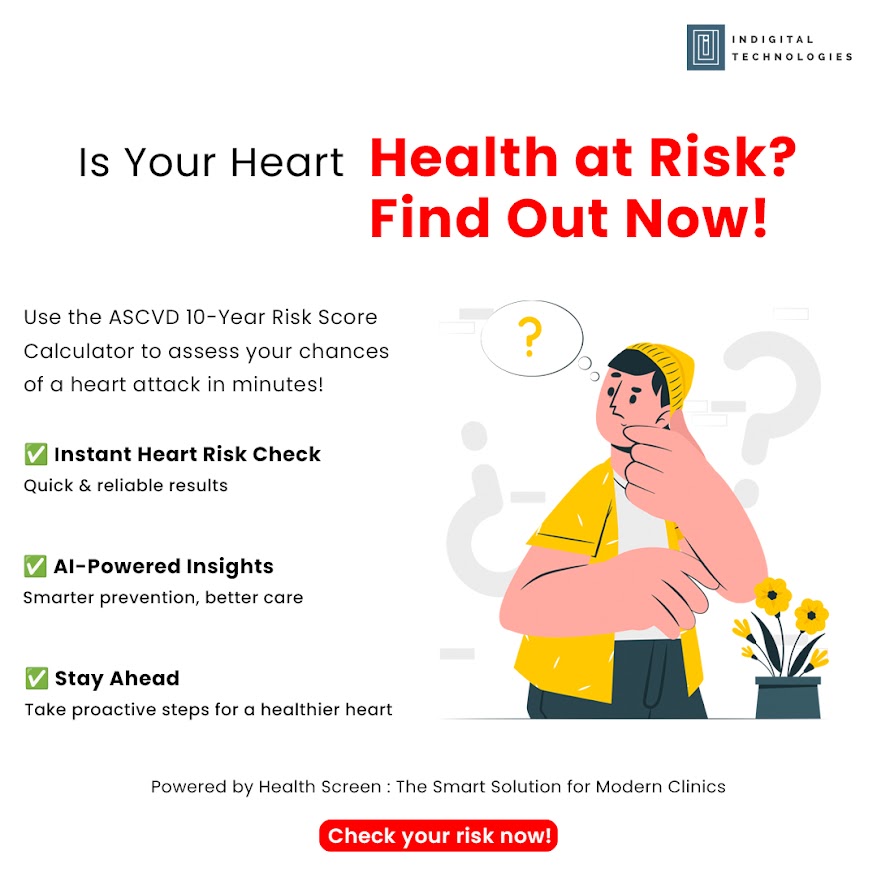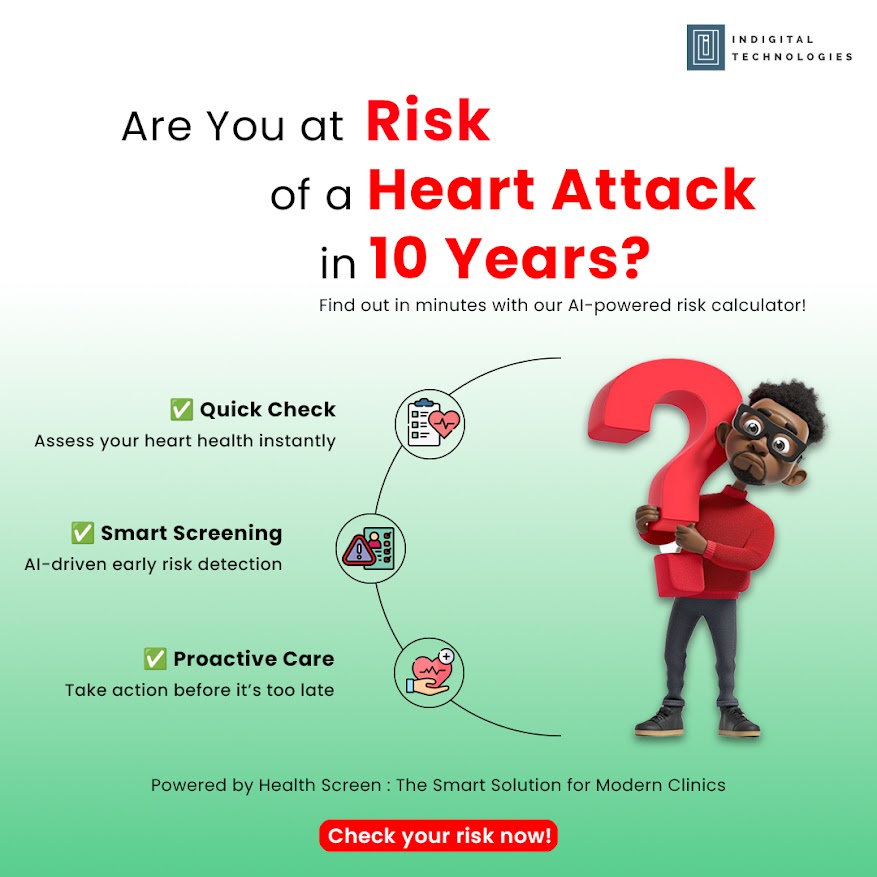In the world of medicine, early detection can make all the difference. Whether it’s catching diabetes before complications arise, spotting cardiovascular risks before a heart attack, or identifying cancer at a treatable stage — timely awareness saves lives.
Yet in the real world, early detection often doesn’t happen. Many patients walk into clinics already facing advanced symptoms. They may have ignored the warning signs or never had the time, knowledge, or resources to evaluate their health risk.
Now, thanks to advancements in artificial intelligence (AI), clinics have a powerful new tool in their hands: the AI Health Risk Calculator — a system designed to quietly assess patient data and flag potential medical concerns long before they become life-threatening.
This quiet revolution is transforming routine consultations into opportunities for proactive care, especially in fast-paced Indian clinics where time is limited, and risk assessment is often skipped.
The Missed Opportunity in Routine Visits
Consider the typical OPD (Outpatient Department) setting in India. Doctors are stretched for time, seeing dozens — sometimes hundreds — of patients a day. Patients describe symptoms briefly, receive a diagnosis, and leave with treatment. There’s often no time to assess broader health risks unless symptoms scream for attention.
But what if, during registration or vitals recording, a smart system could quietly assess age, lifestyle, medical history, and symptoms — and highlight potential risks the patient isn’t even aware of?
What if a 40-year-old patient visiting for fatigue is alerted about the likelihood of pre-diabetes? Or a smoker with mild chest discomfort is flagged for potential cardiac risk?
This is the value of an AI health risk calculator — it transforms reactive treatment into proactive detection.
How AI-Powered Risk Calculators Work
These systems are typically integrated into digital clinic platforms. When a patient registers or checks in, basic information is captured:
- Age and gender
- Symptoms
- Past history
- Family medical history
- Lifestyle habits (smoking, alcohol, physical activity)
- Vitals (weight, BP, pulse, etc.)
Using this data, the AI engine compares the inputs to validated clinical models and data patterns. It then generates a risk score for various conditions — such as diabetes, cardiovascular disease, thyroid dysfunction, chronic kidney disease, PCOS, or mental health concerns.
The result is shared privately with the doctor and sometimes with the patient, enabling further discussion, investigation, or lifestyle counseling — without adding time to the consultation.
The Benefits of Early Risk Flagging
- Timely Intervention
Identifying at-risk patients early allows for basic investigations (like blood tests or ECGs) to confirm or rule out conditions. This leads to early management and better prognosis. - Patient Awareness and Education
When patients are shown data-driven risk insights, they become more curious and involved in their health. They’re more likely to change habits, follow advice, or return for tests. - More Meaningful Consultations
Doctors can focus not only on immediate complaints but also address underlying health concerns, making the consultation more holistic. - Preventive Care Culture
Over time, clinics using AI risk tools contribute to a larger shift — moving Indian healthcare from disease-focused to prevention-focused. - Better Chronic Disease Management
Conditions like hypertension, diabetes, obesity, and even depression are often underdiagnosed. Risk calculators bring them to light before they escalate.
Tailored for Indian Clinics
The best part about modern AI calculators is that they are being tailored for Indian population data. Unlike global tools that rely on Western datasets, new-age risk engines consider Indian-specific factors:
- Genetic predispositions
- Dietary patterns
- Regional disease burdens
- Early onset of lifestyle diseases (especially among urban youth)
- Sociocultural health habits
This ensures higher accuracy and relevance to Indian clinical settings.
Moreover, the tools are designed for low-bandwidth environments and can be used even in clinics without high-end infrastructure.
From Token Number to Total Health Snapshot
Imagine this journey:
- A patient walks into the clinic and receives a token.
- At check-in, their basic vitals and health history are recorded digitally.
- In the background, the AI calculator runs a silent risk check.
- By the time the patient enters the consultation room, the doctor has a health snapshot ready — immediate complaint + potential future concerns.
This enables the doctor to not just treat, but counsel — with data support.
For example:
- “Your fatigue may be linked to vitamin deficiency, but I also see your diabetes risk is high. Let’s do a fasting sugar test today.”
- “Your blood pressure is borderline high, and your lifestyle score shows risk. I’d recommend a BP log and diet changes now, before we need to consider medication.”
This isn’t futuristic. It’s already happening — quietly and efficiently.
Engaging the Patient Without Alarm
A key strength of AI calculators is their non-invasive approach. They don’t overwhelm or scare patients. Instead, they raise a gentle alert — often in the form of a risk percentage or color-coded score (green, yellow, red).
This visual simplicity helps patients grasp the seriousness of a situation without panic. It invites dialogue rather than defensiveness.
And because it comes from a system — not a lecture — patients are often more receptive. They see it as neutral, objective feedback, not judgment.
A Tool for Every Doctor
Many believe AI tools are only for tech-savvy or large practices. But in reality, AI health risk calculators are scalable for all types of clinics:
- A family physician in a Tier 2 town can use it to flag diabetes and BP risks during routine check-ups.
- A gynecologist can use it to identify thyroid or PCOS risks in young women.
- A general practitioner can screen for cardiac and smoking-related risks in middle-aged men.
- A pediatrician can assess early obesity and screen time habits in children.
The system adapts to the doctor’s specialty and patient base — becoming an ally in everyday practice.
Encouraging Follow-Ups and Better Compliance
When patients are shown a risk score and told, “Let’s do a test next week to be sure,” they’re more likely to return. It creates an anchor for follow-up.
Likewise, when they understand the why behind medication or lifestyle advice, they are more motivated to comply. This reduces dropout rates and improves clinical outcomes.
Smart reminders based on risk (automatically triggered by the system) also ensure that at-risk patients don’t fall through the cracks.
Supporting Evidence-Based Practice
In today’s medicolegal environment, data-backed consultations matter. When a doctor can point to a risk analysis that led to a particular test or treatment plan, it reinforces the credibility of their approach.
This brings confidence, transparency, and documentation to clinical decisions — especially useful for patient records and future consultations.
In Conclusion
AI health risk calculators are not just digital gimmicks. They’re silent partners in every successful clinic — scanning, flagging, and guiding without noise or disruption.
They make consultations deeper, clinics smarter, and patients more aware. They turn a reactive healthcare model into a proactive one — a much-needed shift for India’s fast-changing health landscape.
For doctors looking to enhance patient care without adding time or complexity, and for clinics aiming to move beyond basic service to intelligent care, the message is clear:
The future of early detection is already here — and it’s powered by AI.



